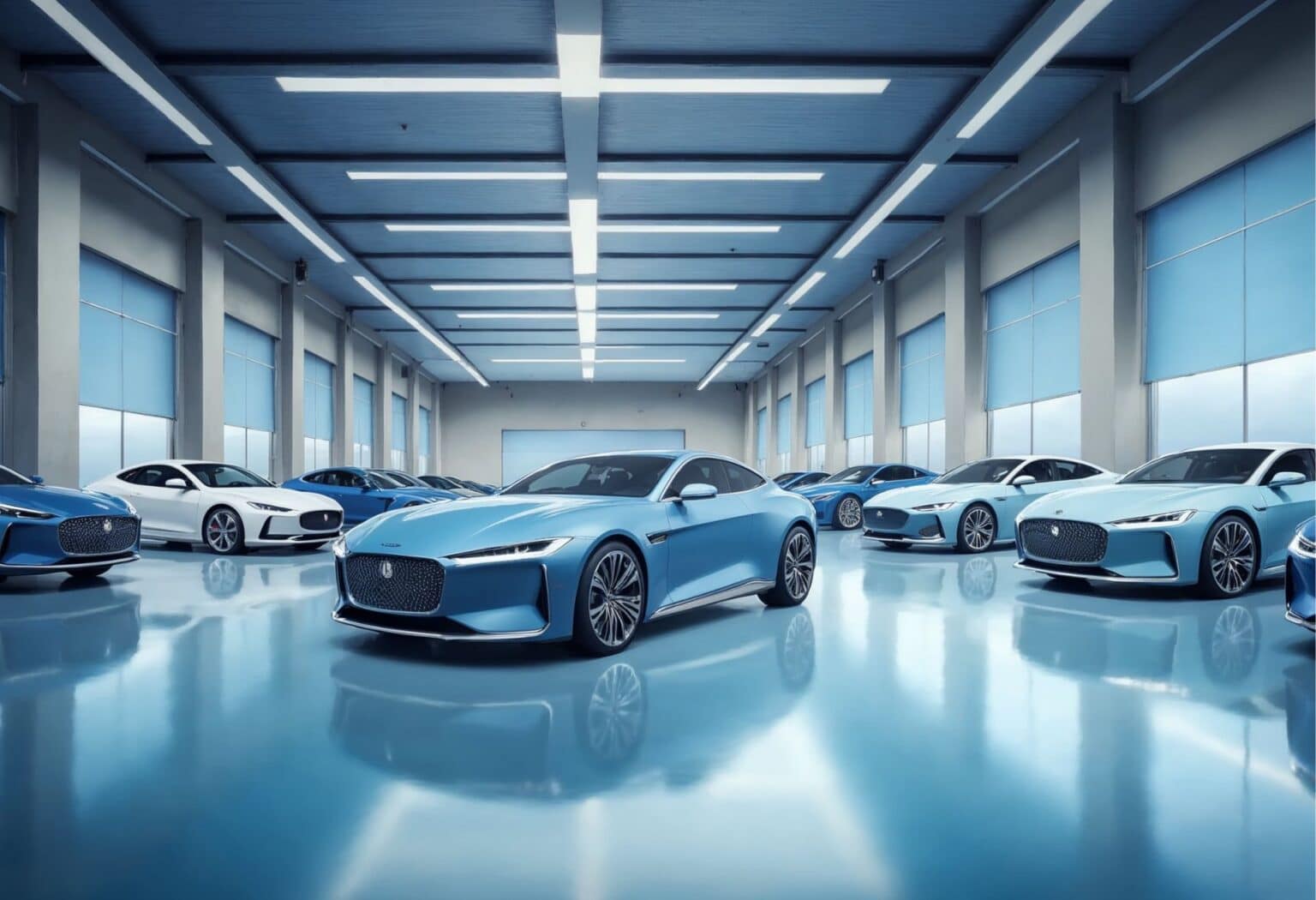The automotive industry is in the midst of a digital revolution. From car dealerships competing for local buyers to parts manufacturers serving global markets, your website is now your most powerful sales tool. Today’s vehicle shoppers conduct extensive online research before ever visiting a lot, DIY mechanics search for parts at midnight, and body shops need to showcase their work to customers and insurance companies. In 2025, your automotive website must deliver speed, functionality, and an experience as impressive as the vehicles you sell or service. At Azuro Digital, we specialize in automotive website design services and we’re deeply involved in the entire website strategy for our clients. Here are 10 essential web design strategies to accelerate your automotive business:
1. Build a Dynamic Vehicle Inventory Management System
For dealerships, your inventory is your lifeblood, and it needs to shine online. Implement a robust inventory management system that displays real-time vehicle availability with comprehensive filtering options. Shoppers should be able to search by make, model, year, price range, mileage, colour, features, fuel type and body style.
Each vehicle listing must include high-quality photos from multiple angles – exterior, interior, engine bay and any notable features. Include 360-degree views or video walkthroughs when possible. Display key information prominently: VIN, mileage, trim level, fuel economy, accident history, number of previous owners, and warranty details. Integrate CARFAX or AutoCheck reports directly into listings to build trust. Add comparison tools that let shoppers evaluate multiple vehicles side-by-side. Remember that car buying is one of the largest purchases most people make – give them every detail they need to feel confident moving forward with your dealership.
The same concept applies for parts manufacturers – create a detailed inventory management system for website visitors to filter, browse and compare different parts (see tip #6 for more advice on this).
2. Integrate Seamless Lead Capture and Appointment Scheduling
The path from browsing to buying should be friction-free. Every vehicle listing needs clear calls-to-action: schedule a test drive, get pre-approved for financing, request a trade-in valuation, or chat with a sales representative. Implement simple, mobile-optimized forms that don’t ask for excessive information upfront – name, phone and email are sufficient for initial contact.
For service centres and body shops, offer online appointment booking that shows real-time availability. Let customers select their service type, preferred date and time, and upload photos of damage or describe issues. Send automatic confirmation emails and SMS reminders to reduce no-shows.
The easier you make it for customers to take the next step, the more appointments you’ll fill and the more vehicles you’ll sell or service. Consider adding AI chatbots that can answer common questions about inventory, financing options, or service pricing 24/7 when your team isn’t available.
3. Showcase Your Service Department and Build Trust
Service departments are profit centres that build long-term customer relationships, yet many automotive websites treat them as afterthoughts. Create a comprehensive service section that details your capabilities: routine maintenance, diagnostics, repairs, warranty work and specializations.
For body shops, create a portfolio gallery showcasing before-and-after photos of collision repairs, custom paint jobs or restoration projects. Use high-quality imagery that demonstrates your craftsmanship and attention to detail. Include your certifications (I-CAR, ASE, manufacturer certifications), warranty information and insurance partnerships. Feature customer testimonials specifically about service experiences. Offer transparent service menus with estimated price ranges for common services – transparency builds trust and reduces the anxiety many customers feel about automotive service costs. Consider creating educational content about when certain services are needed and warning signs to watch for.
4. Implement Vehicle Configurators and Build-Your-Own Tools
For manufacturers and high-end dealerships, interactive vehicle configurators create engagement and emotional investment. Allow prospects to build their dream vehicle by selecting trim levels, exterior colours, interior materials, wheel options, packages and accessories. Display real-time pricing updates as they customize.
Use high-quality 3D renderings or photographs that update dynamically to reflect their selections. Let users save their configurations, share them on social media or send them directly to dealerships for quotes. This interactive experience transforms passive browsing into active participation, increasing the likelihood of conversion. Even if you’re not a manufacturer, consider partnering with OEMs to embed their configurators on your site, allowing shoppers to spec out vehicles before checking your inventory for matches or placing custom orders.
5. Optimize for Local SEO and Multi-Location Management
Automotive businesses are inherently local – people typically won’t drive hundreds of miles for routine service or to browse used cars. Optimize aggressively for local search with location-specific content, Google Business Profile integration, and schema markup that helps search engines understand your locations, hours and services.
For multi-location dealerships or service chains, create dedicated pages for each location with unique content, local testimonials, staff photos and specific inventory or service offerings. Include embedded maps, driving directions and local landmarks. Implement location-based redirects or selection tools that guide visitors to their nearest location. Encourage and respond to Google reviews consistently – local search rankings heavily weight review quantity, quality and recency. Include your address and phone number in the footer of every page with consistent NAP (Name, Address, Phone) information across all online directories.
6. Create Parts Catalogs with Advanced Search Capabilities
For parts manufacturers, distributors, and dealerships with parts departments, your online catalog needs sophisticated functionality. Implement search by vehicle year, make, model and part type. Include OEM part numbers, aftermarket equivalents, compatibility information and fitment guides.
Display high-resolution product images, technical specifications, installation difficulty ratings and whether special tools are required. Show real-time inventory availability and estimated delivery times. For complex parts, include diagrams showing how components fit together. Offer technical support resources like installation videos, torque specifications and troubleshooting guides. Consider implementing a “garage” feature where registered users can save their vehicle information for faster, more accurate parts searching in future visits. The easier you make it for DIY mechanics and professional technicians to find exactly what they need, the more you’ll sell.
7. Leverage Video Content to Build Engagement
Automotive content is naturally visual and engaging – capitalize on this with strategic video integration. Dealerships should create video walkthroughs of inventory, especially for premium or unique vehicles. Service centres can produce explainer videos about common repairs, maintenance tips, or what to expect during service visits.
Manufacturers and custom shops should showcase their work through time-lapse videos of builds, interviews with technicians, or behind-the-scenes content that humanizes your brand. Include video testimonials from satisfied customers discussing their purchase or service experience. Host these videos on your website (not just YouTube) to keep visitors engaged on your site longer, which improves SEO rankings. Ensure all videos are mobile-optimized with captions for viewing without sound. Video content increases time on site, builds emotional connections and gives prospects confidence in your expertise.
8. Display Financing Options and Payment Calculators
For dealerships, financing is often more important to buyers than sticker price. Integrate payment calculators prominently on vehicle listing pages that allow shoppers to see estimated monthly payments based on down payment, trade-in value, interest rate and loan term.
Partner with lenders to display current promotional rates and special financing offers. Create a dedicated financing page that explains your lending partners, credit requirements and the pre-approval process. Offer online credit applications that are secure and mobile-friendly. Be transparent about the financing process – many first-time buyers feel anxious about this step, and clear information reduces that friction. For commercial clients buying fleet vehicles or expensive parts in bulk, offer net terms information and B2B credit application processes. The more you can help prospects understand affordability before they contact you, the more qualified your leads will be.
9. Implement Trade-In Valuation Tools
Trade-ins are critical to dealership sales, yet many websites make this process cumbersome. Integrate instant trade-in valuation tools (like KBB Instant Cash Offer or similar services) directly on your site. Allow customers to enter their vehicle information and receive an estimated value in real time.
Create dedicated trade-in landing pages that explain your process, what factors affect value and what documentation customers should bring. Offer online appraisal scheduling where customers can upload photos of their vehicle and receive a preliminary offer before visiting your location. Make it clear that you accept trade-ins even if customers aren’t purchasing from you – this opens additional inventory acquisition channels. The easier and more transparent you make the trade-in process, the more customers will feel comfortable moving forward with a purchase.
10. Showcase Awards, Partnerships, and Manufacturer Certifications
Trust and credibility are paramount in automotive purchases and services. Display your dealership awards, manufacturer certifications, review ratings, and industry recognitions prominently. If you’re a certified pre-owned dealer, manufacturer-authorized service centre, or hold specialized certifications, feature these with official badges and logos.
For body shops, display insurance partnerships (DRP programs with major insurers) and manufacturer certifications that demonstrate your facility meets OEM repair standards. Parts suppliers should showcase OEM partnerships and quality certifications. Include customer satisfaction ratings, years in business and community involvement. Feature press mentions, positive media coverage, or involvement in automotive enthusiast communities. Create a “Why Choose Us” section that articulates your unique value proposition – whether it’s no-haggle pricing, lifetime warranties, family ownership or specialized expertise. This social proof accelerates trust-building and differentiates you in a crowded market.
To Sum Up
Your automotive website is your 24/7 showroom, service advisor and sales team rolled into one. By implementing these 10 automotive web design strategies, you’ll create a digital experience that meets the sophisticated expectations of today’s automotive consumers while addressing the unique needs of your specific segment within the industry.
The automotive landscape in 2025 is more competitive than ever, with online shoppers comparing dozens of options before making contact. A strategically designed website that combines stunning visuals, robust functionality and transparent information gives you a decisive advantage. Invest in your digital presence with the same passion you invest in your inventory, service quality, or product development, and watch your traffic convert into customers who trust you with one of their most significant purchases.
Thinking about outsourcing your automotive web design project? Get in touch with our team!





